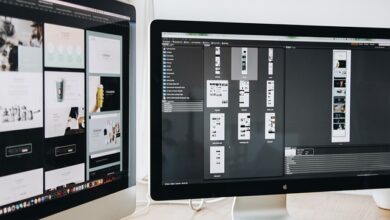
In today’s competitive business environment, where e-commerce and digital marketing dominate, product photography plays a crucial role in shaping a brand’s identity and influencing purchasing decisions. Whether you are a small business owner or part of a large enterprise, high-quality product photography can significantly impact your success. It goes beyond simply showcasing products—it tells a story, builds trust, and enhances the customer experience.
This article explores the importance of product photography, how it influences consumer behavior, the key elements of effective product photography, and practical tips for creating captivating images that drive sales.
1. First Impressions Matter
When potential customers browse through online stores or social media platforms, the first interaction they have with a product is visual. People are naturally drawn to aesthetically pleasing images. In fact, studies show that consumers form a judgment about a product in as little as 90 seconds, and up to 90% of that judgment is based on color and visual factors. If your product photos are of poor quality, blurry, or poorly lit, it can leave a negative impression and cause potential buyers to move on to a competitor.
High-quality product photography, on the other hand, grabs attention immediately. It conveys professionalism, attention to detail, and pride in the product, all of which are crucial for making a strong first impression. An attractive image invites the viewer to explore further, increasing the likelihood of engagement and conversion.
1.1 The Power of a Visual Story
Photography allows businesses to tell a story. By presenting products in well-composed, thoughtful images, you can convey not just the features of the product but also its emotional value. For example, a beautifully styled photo of a luxury watch or a cozy blanket can evoke feelings of sophistication or comfort, influencing the buyer’s emotions and increasing the desire for the product.
2. Product Photography Builds Trust and Credibility
In the online marketplace, customers cannot physically touch or examine the product, which makes them rely heavily on visual cues. This is where product photography becomes a powerful tool in building trust and credibility. Clear, detailed, and accurate images of your products give customers the confidence that what they see is what they will get.
2.1 Reducing Uncertainty
Product photography reduces the uncertainty that comes with buying products online. Consumers are often hesitant to make purchases because they are unsure if the product will meet their expectations. By offering high-resolution images that show the product from multiple angles, including close-ups of key features or textures, you minimize the chance of misunderstandings or disappointments. This transparency can lead to fewer returns and an overall improvement in customer satisfaction.
2.2 Consistency and Professionalism
A professional and consistent visual presentation across all platforms is key to maintaining brand trust. Inconsistent or amateurish photography can create a disjointed brand image and lead consumers to question the legitimacy of your business. High-quality images that are consistent in style, lighting, and quality create a cohesive brand experience, reinforcing your company’s reliability.
3. Boosting Sales with Product Photography
One of the most direct ways that product photography impacts a business is through increased sales. The connection between high-quality product images and improved conversion rates is well-documented. Customers are much more likely to purchase a product when they feel confident in its appearance and functionality, and photography plays a vital role in that decision-making process.
3.1 Encouraging Impulse Buys
A well-executed photograph can spark an emotional response, leading to impulse buys. When customers see a visually stunning product image, they may imagine how it fits into their life—whether it’s a fashionable item they want to wear or a gadget they want to use. Emotional triggers often lead customers to act on their desire to own that product, especially if it feels aspirational or exclusive.
3.2 Highlighting Product Features
Good product photography is not just about making items look beautiful—it’s about communicating their value and functionality. Images that highlight key features—whether it’s the intricate design of a piece of jewelry or the ergonomic shape of a kitchen gadget—give customers the information they need to justify a purchase. Effective product photography does this while maintaining a balance between aesthetic appeal and informative clarity.
4. Product Photography and Social Media
Social media platforms like Instagram, Facebook, and Pinterest are highly visual by nature, making them perfect outlets for product photography. In the age of social media marketing, strong visuals are essential for capturing attention in an oversaturated market. Brands that invest in professional photography can create more shareable content, which leads to higher engagement and better brand visibility.
4.1 Instagram Shopping
Platforms like Instagram have integrated shopping features that allow users to buy products directly through the app. When users encounter visually stunning photos, they are more likely to explore the product and make a purchase. Product photography tailored to social media’s fast-paced environment should focus on creativity, aesthetics, and the emotional appeal of the product.
4.2 User-Generated Content
A robust product photography strategy also encourages user-generated content (UGC). Customers who receive well-photographed products are more likely to take pictures and share them on their social media channels, providing your brand with free advertising. High-quality product photos set a standard that motivates customers to capture and share their own stylish images, creating a cycle of engagement.
5. The Elements of Effective Product Photography
To achieve impactful product photography, it is essential to focus on several key elements. These aspects can significantly enhance the visual appeal and clarity of your product images, leading to higher conversion rates and better brand representation.
5.1 Lighting
Lighting is the most critical aspect of any photography. Proper lighting can make a product look vibrant, clear, and visually appealing. Natural light is often preferred for its ability to create soft, flattering shadows, but studio lighting can be used for more control. Avoid harsh shadows or overly bright highlights that obscure details.
5.2 Background
The background should complement, not compete with, the product. White backgrounds are commonly used for e-commerce websites to keep the focus on the product. However, lifestyle backgrounds, where the product is shown in use, can be more engaging, especially for social media and advertising campaigns.
5.3 Angles and Perspectives
Showing the product from multiple angles helps customers understand the product better. Include shots from the front, back, and sides, as well as close-ups of any important details. 360-degree photos or videos are also becoming popular, giving customers a comprehensive view of the item.
5.4 Editing and Post-Production
Post-production editing helps to enhance the clarity and brightness of the image, remove any blemishes, and ensure color accuracy. However, it’s important to keep editing subtle to maintain the authenticity of the product.
6. Practical Tips for Capturing Stunning Product Photos
If you’re looking to improve your product photography or are just getting started, here are some practical tips to help you capture stunning images:
- Use a tripod: A tripod ensures stability and eliminates camera shake, resulting in clear, sharp photos.
- Focus on details: Capture close-up shots to show textures, patterns, or intricate designs.
- Use natural light: If possible, shoot your photos near a window with diffused natural light for soft, even lighting.
- Avoid clutter: Keep the background simple and free of distractions to keep the focus on the product.
- Experiment with angles: Don’t be afraid to try creative angles and perspectives to make the product look unique.





